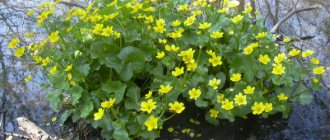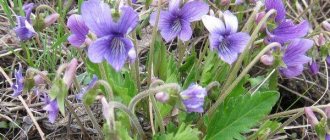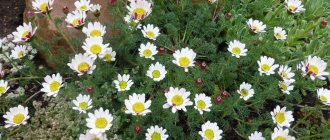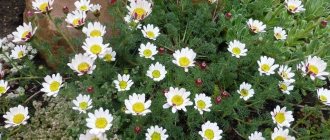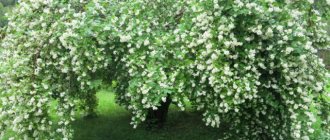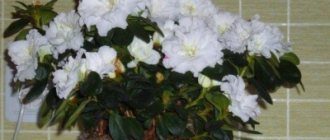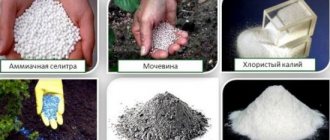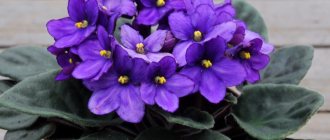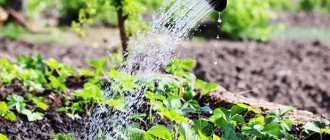Facts from history
Plants are a biological kingdom that consists of multicellular living organisms. Despite the lack of ability to move, representatives of the species lead active life activities. Various chemical processes occur inside the leaves, stems and roots that ensure the normal functioning of the entire system.
The first description of the diversity of the plant kingdom belongs to the ancient philosopher and scientist Aristotle. He did not give an exact definition, name, or characteristics of families or subkingdoms, but placed plants between representatives of the animal world and inanimate objects, since they are not able to move.
After some time, scientists identified a separate kingdom of fungi, and the plants became a separate species, which is still studied today. In addition, experts have identified some varieties of algae that do not have a root system, like other representatives of the plant world.
Stages of evolution
If you believe the finds and conclusions of paleontologists, the separation of flora and fauna occurred 3 billion years ago. This period dates back to the Archean era, when the first units with plant characteristics were discovered.
In the Proterozoic era, some already had an idea of eukaryotes, which, in their opinion, were the result of the transition to this state of an ordinary amoeboid cell. It was this transition that caused the appearance of certain types of algae, which became the first true representatives of the plant world. Somewhat later, red, green and blue-green algae appeared.
In the Paleozoic era, the first higher units—rhiniophytes—appear. This occurs as a result of many transformative processes that provoke the disappearance of some seas. As a result of such changes, many algae began to adapt to life on land, and survived thanks to the formation and development of cyanobacteria and bacteria on the soil.
Cooksonia is considered one of the most ancient plants discovered on the territory of modern Scotland . Paleontologists have determined that its age is close to 415 million years. After the discovery of Cooksonia in 1937, the plant world divided into two main lineages: saprophytic, or vascular, and gametophytic, or bryophytes.
Plant species
Trees are an example of vascular plants
Mosses are an example of non-vascular plants
There are many different types of plants. They are often divided into two main groups: vascular and non-vascular.
- Vascular - have special tissues (vascular-fibrous bundles) that help move substances, such as water, through the body of the plant. Most of the organisms you probably think of as plants, such as trees, shrubs, grasses, and flowers, belong to this group. Vascular plants are also divided into flowering and non-flowering plants .
- Nonvascular are smaller plants, such as mosses, that use diffusion and osmosis to move nutrients through the plant body.
Plants are also usually divided into the following groups:
- Algae (green algae, charophytes);
- Bryophytes (liver mosses, anthocerotic mosses, bryophytes)
- Vascular spores (lycophytes, pteridophytes);
- Seed plants (cycads, ginkgos, conifers, opiums, flowering plants).
Features
Understanding the taxonomy or systematic groups of plants will help by studying the main characteristics of representatives of this kingdom, their general characteristics and structure. Experts identify several main features of plants growing on Earth:
- the cells that make up leaves, stems and other parts have dense cellulose membranes;
- in cells you can find special chloroplasts containing chlorophyll, which enables the process of photosynthesis;
- thanks to chlorophyll, almost every unit is green;
- attached lifestyle;
- nutrients and energy are stored in the stems or leaves in the form of starch;
- the distinctive feature of each unit is the ability to grow throughout life;
- vital activity and all important processes are regulated with the help of phytohormones, which in structure are somewhat reminiscent of human ones;
- have a dense shell, which usually does not allow light to pass through and consists of cellulose;
- by nature they are producers, that is, they produce organic substances under the influence of carbon dioxide and solar radiation.
In addition, experts noted the alternation of generations. This feature is not considered unique, but allows one to distinguish representatives of the plant world from fungi and some algae.
Signs of the plant kingdom
Before moving directly to the classification of plants, it is worth remembering that plants have a number of characteristics that are characteristic of all representatives of the kingdom.
Signs of plant divisions
- Plants are capable of autotrophic nutrition. This means that in the process of life, plants synthesize the necessary organic substances from carbon dioxide and water under the influence of sunlight during photosynthesis.
- The cell wall of plants is built from the dense polysaccharide cellulose.
- Most plants lead an attached lifestyle.
- Starch is a nutrient that is stored in plant cells.
- Unlike animals, plants grow throughout their lives.
- Phytohormones regulate plant development processes.
According to the textbook “Biology. 6th grade” edited by I. N. Ponomareva, the plant kingdom is divided into subkingdoms. There is a subkingdom of lower plants and a subkingdom of higher ones. Representatives of the subkingdom of lower plants are algae.
Depending on the complexity of the structure and method of reproduction, seven plant divisions are distinguished, the characteristics of which will be discussed below.
Algae department
Algae are the most primitively organized representatives of the plant kingdom. The body of algae is called thallus
. In structure, these are cells of the same type, among which it is impossible to distinguish individual plant organs.
Algal thallus cells:
- Eukaryotic. The structure of the cell contains a nucleus - the carrier of genetic information.
- Photosynthetic. During photosynthesis, glucose is synthesized from water and carbon dioxide.
- Autotrophic. Organic compounds are synthesized from inorganic compounds.
Due to the presence of a light-sensitive eye ( stigma)
) have
phototaxis
, i.e. they move towards a light source to ensure photosynthesis processes. Reproduction can be asexual - through division of the thallus, and sexual - with the formation of gametes.
Meaning
. Being aquatic plants and producing oxygen as a by-product of photosynthesis, algae provide oxygen and nutritious organic substances to marine inhabitants, are used as food for humans, and are used as feed for livestock. Algae are discussed in more detail on page 110 of the textbook “Biology. 6th grade” edited by I. N. Ponomareva.
Department "bryophytes"
In their structure, bryophytes are more complex than algae, and representatives of the department have a stem and leaves. A distinctive feature is the absence of roots. The function of the root to absorb nutrients from the soil is taken over by rhizoids
.
Meaning
. Bryophytes are capable of accumulating large volumes of moisture, thereby regulating the planet’s water balance. Thanks to the large area of green mass, mosses provide the planet with oxygen. When mosses rot, peat is formed, which is a nutritious substance for other plants and is also used as fuel.
Department "Moss-moss"
Currently, scientists count about 1,000 species, although 350 million years ago, lycophytes, horsetails and ferns were the main representatives of the rich plant world of the ancient Earth. Dying and spending thousands of years in the thickness of the earth, deposits of coal, a valuable mineral, were formed from the remains of plants.
Externally, modern representatives look like mosses. However, the identification of differentiated roots, stems and leaves in lycophytes allowed scientists to classify representatives of the department as higher plants.
Meaning
. Like all plants, lycophytes contribute to the provision of oxygen. From some species, humans have learned to isolate curare-like poison and use it in medicine.
Biology. 6th grade. Workbook No. 1
The workbook was developed for the textbook “Biology. 6th grade" (authors I.N. Ponomareva, O.A. Kornilova, V.S. Kuchmenko), included in the "Algorithm of Success" system. Contains problem and test tasks that allow the teacher to organize differentiated practical work for sixth-graders, form basic biological concepts, effectively control knowledge, involving students in self-assessment of educational activities.
Buy
Department "horsetails"
Like mosses, giant representatives of horsetails inhabited the Earth 300 million years ago. Currently, horsetails are found in the Northern Hemisphere, although researchers may simply not have found horsetails among the rich flora of the Southern Hemisphere, and if you succeed, the Nobel Prize is in your pocket. Already at first glance, the young botanist will accurately determine that this is a representative of the horsetails: whorled leaves in clearly defined internodes are characteristic only of this department.
Meaning
. Despite the fact that horsetail is a weed and, thanks to its powerful rhizome, causes many problems for farmers, it is an indicator of soil acidity and the need to add lime to obtain a high-quality harvest. It is a source of food for wild deer and wild boars. In pharmacology, decoctions and extracts of horsetail are used as a diuretic.
Department "ferns"
Walking through a temperate forest, almost everyone has seen the bright green, wide leaves of ferns. Representatives of the department are numerous and number about 10 thousand species. The stem is poorly developed, and the green mass of leaves significantly prevails over the stem. Adventitious roots help the plant to establish itself well in the soil and receive more nutrients. Ferns reproduce by dividing rhizomes or using spores. Sexual and asexual generations are separated. An adult fern plant is an asexual generation.
Meaning
. Due to their lush green foliage, ferns are used as decorative decorations in garden areas and to saturate the air with oxygen. Some of the representatives are used in cooking to prepare exotic dishes.
Evolution did not stand still, and over the 350 million years that have passed since the reign of ferns, a more advanced method of reproduction has formed on the planet - the seed
.
A seed is a small sporophyte
with a supply of nutrients, a root, a bud and embryonic leaves.
Department "gymnosperms"
Numerous trees, shrubs and vines, whose seeds lack a special closed storage for the ovule and the seed developing from it, belong to the gymnosperm
. The temperate zone of the northern hemisphere is the most suitable habitat for gymnosperms. It is there that the bulk of coniferous plants form the taiga.
Meaning
. Gymnosperm wood is used in construction and the pulp industry as fuel. People use the fruits of some gymnosperms for food (breadfruit). One of the amazing representatives of gymnosperms is sequoia. Some of these majestic trees are over 1000 years old.
Department "angiosperms" or "flowering"
Despite the fact that on the scale of evolution the department is the youngest, flowering plants that delight the eye in flower beds and fields, fruit trees and other species whose seeds are protected make up the bulk of the diverse flora on planet Earth. Currently, their number has reached 250 thousand species and new species continue to be discovered and artificially bred.
Meaning
. This department includes cultivated and wild plants that people use for food. Wood is used in construction work and in furniture production. Extracts from various parts of plants are used in medicine.
Biology. 6th grade. Workbook No. 2
The workbook was developed for the textbook “Biology. 6th grade" (authors I.N. Ponomareva, O.A. Kornilova, V.S. Kuchmenko), included in the "Algorithm of Success" system. Contains problem and test tasks that allow the teacher to organize differentiated practical work for sixth-graders, form basic biological concepts, effectively control knowledge, involving students in self-assessment of educational activities.
Buy
Methodical advice
You can start the lesson with a conversation about the diversity of the plant world and ask students to name the plants. If a task was given for the summer to collect a herbarium, students show their herbariums and tell where the plants were collected (field, forest, meadow, garden, etc.).
During the conversation, the teacher brings the children to the fact that more than 200 thousand wild and cultivated plants are currently known, and without knowledge of systematization it is impossible to study them all. Then you can invite the children to read messages No. 1 and No. 2 from the list below.
With the help of the teacher's leading questions about the structure of the root, stem, seeds and demonstration of visual material, the children determine the differences between the various sections of plants. Students read out the rest of the reports.
List of topics for preparing messages yourself:
- Botany: from Theophrastus to the present day
- Carl Linnaeus - father of taxonomy
- Coal - fuel or witness to history
- The world of plants in cooking: from algae to angiosperms
Structural features
The diversity of the structure of plant units makes it possible to divide them into unicellular and multicellular types. Prominent representatives of the first species are Chlamydomonas and Chlorella. One of the structural features is the rather large size of each cell, which sometimes reaches several centimeters. Eukaryotes have a rigid cell wall and a large amount of cellulose.
Each cell contains chloroplasts and vacuoles, which provide elasticity. During cell proliferation, the septum is formed by containing a large number of phragmoplasts. Plant spermatozoa have two or more flagella. The multiflagellar system resembles the structure of green algae cells.
Cells of units of the plant world are combined into tissues, the peculiarity of which is the absence of intercellular substance and the presence of a fairly large number of dead cells. Some parts of the plant mainly consist of just such cells. In addition, one of the differences between representatives of the plant and animal world is the composition of tissues, which may include different types of cells.
Depending on the type of plant, its structure may differ. The body of some species is represented by a continuous layer without branches. Others have a developed root system and above-ground part. Root vegetables, for example, are distinguished not only by the presence of multiple sinuous roots, but also by fruits of different shapes and sizes. Leaves act as photosynthetic organs and contain the largest amount of chlorophyll.
The bud acts as a separate organ in some plant species. An example of such representatives would be some trees on which buds appear earlier than leaves and flowers.
plant cell
Diagram of the structure of a plant cell
Plant cells have rigid cell walls consisting of cellulose, chloroplasts (which help in photosynthesis), nuclei and large vacuoles filled with water.
One of the most important functions of most plants is photosynthesis. Plants use it to create energy directly from sunlight.
Life cycle and reproduction
A characteristic feature of vegetation is the ability to reproduce sexually and asexually. The first method involves oogamy, which higher vascular plants are capable of, while the second is most often carried out vegetatively. The life cycle of large and small plants includes several stages:
- In the life cycle, haploid, or sexual (gametophyte), and diploid, or asexual (sporophyte) generations constantly alternate.
- On the gametophyte, female and male genital organs are formed, the sperm enters the egg, and a zygote is formed, which after some time forms an embryo.
- Typically, the embryo becomes a sporophyte in which sporangia are formed. In the sporangia, female and male cells are formed again, and the process is repeated.
A similar cycle is characteristic of Bryophytes and Ferns. Seed plants require additional help for fertilization, which is carried out through pollination. Angiosperm species also require pollination, after which a flower is formed, which turns into a fruit after some time. This order allows the life cycle not to be interrupted, and units are always at a certain stage of development.
It has been noted that in flowering plants in a temperate continental climate, the life cycle depends on weather conditions and may slow down or stop completely.
Main types
The classification of plants involves their division into two subkingdoms (higher and lower) and several main varieties. Among the lower ones, unicellular organisms predominate. In the subkingdom of higher plants, experts distinguish ferns, mosses, gymnosperms, angiosperms or flowering plants, and algae. Each subspecies has its own characteristics:
- The bryophytes include the simplest above-ground representatives. They grow in forests, on moist soils, shaded areas, are common in different climatic zones and are represented by many varieties. It is worth noting that mosses do not have their own conducting system, this makes them the most primitive. They absorb nutrients and moisture throughout the entire body area. Units of this species are very low, their height rarely exceeds 20 cm. Most mosses are represented by perennial plants; sexual reproduction predominates in them. Experts distinguish three classes of mosses: anthocerotes, phyllophytes and liver mosses.
- Ferns are also called spore ferns. They, like bryophytes, prefer moist, shaded habitats. The majority of ferns are represented by herbaceous plants, but tree-like and aquatic forms are also found. The species is divided into several classes: mosses, horsetails, ferns.
- Algae differ from others in their most primitive structure. They do not have roots, stems or leaves, and absorb nutrients from water over the entire surface of their body.
Scientists have studied these species carefully, since their simple structure and life cycle are not difficult to record.
Basic structure of plants
The three main parts of the structure of most vascular plants are the leaf, stem and roots.
A leaf is a plant organ that specializes in photosynthesis. Leaves capture energy from sunlight and also capture carbon dioxide from the atmosphere. Many leaves are flat in shape to capture as much sunlight as possible. However, leaves come in a variety of shapes, including the long, thin needles found on coniferous plants.
The stem is the main part that supports leaves, flowers and fruits. The stems have vascular tissues that move nutrients and water through the plant, helping it grow. Plants often store nutrients in their stems.
Root is an axial, usually underground part of plants. Roots help support the plant and collect water or minerals from the soil. Some plants store food in their roots. There are two main types of roots - fibrous roots and tap roots. The taproot typically has one large taproot that grows very deep, while fibrous roots have many branches growing in different directions.
Gymnosperms and angiosperms
The type of gymnosperms includes about 1000 different representatives. Their main difference from angiosperms will be the absence of any shelter for storing seeds. They also do not have fruits or flowers. This division of higher plants includes several classes:
- Coniferous plants can be represented by trees and shrubs. Their seeds develop in cones located on the branches, are easily separated and are not covered with a film. The main representatives of the class will be cedar, pine, spruce, cypress, fir. Conifers are distributed almost everywhere, especially in the wild.
- Cycad plants are an ancient group. The most striking representative is the penetrating cycad.
- Ginkgoaceae are considered an ancient class of plants. The main representative is ginkgo, considered relict. The only modern species is Ginkgo biloba.
- Gnetovye come in different forms. Most often they are represented by vines, but shrubs and trees are also found. Common in Southeast Asia, they are grown for their edible fruits and seeds, from which they make flour. The bark of oppressed trees is very durable and is used for making threads.
The angiosperm plant species includes shrubs, trees and grasses. They are considered the most developed representatives of the flora. The main difference between this species is the presence of a fruit and a flower. The seeds are hidden in the ovary, from which the fruit is formed. Angiosperms include several classes, but the largest are the dicots and monocots.
The first are distinguished by the structure of the seed, which has two lobes. The leaves usually have a reticulate structure and also have a central root. Small branches go from it. Dicotyledons are divided into 6 subclasses and many varieties.
The embryo of monocot plants has one cotyledon. The representatives of the class themselves are endowed with a fibrous root system and an arcuate pattern of leaf venation. The class is divided into 5 subclasses and many families.
Plants from A to Z
- A -
- Abutilone
- Ageratum
- Aglaonema
- Maidenhair
- Adonis
- Azalea
- Quince
- Aquilegia
- Aconite
- Actinidia
- Allium
- Alyssum
- Alocasia
- Alstroemeria
- Amaranth
- Amaryllis
- Anastatic
- Anemone
- Pansies
- Orange
- Arabis
- Watermelon
- Arnica
- Chokeberry
- Artichoke
- Astilbe
- Aster
- B -
- Badan
- Basil
- Eggplant
- Balsam
- Okra
- Periwinkle
- Marigold
- Begonia
- Colchicum
- Belamkanda
- Immortelle
- Bidens
- Bonsai
- Hawthorn
- Brugmansia
- Swede
- IN -
- cornflower
- Weigela
- Lady's slipper
- Grape
- Viola
- Cherry
- Volzhanka
- Wolf's Bast
- G -
- Galanthus
- Carnation
- Heuchera
- Helenium
- Dahlia
- Geranium
- Gerbera
- Hyacinth
- Gilia
- Hypestes
- Hippeastrum
- Gladiolus
- Wisteria
- Gloxinia
- Blueberry
- Gentian
- Godetia
- Peas
- Hydrangea
- Avens
- Walnut
- Pear
- Gumi
- D -
- Daikon
- Delosperma
- Delphinium
- Loosestrife
- Dictamnus
- Dieffenbachia
- Dicentra
- Dracaena
- Dryad
- Datura
- Melon
- E -
- Blackberry
- AND -
- Jasmine
- Honeysuckle
- Z -
- Zamioculcas
- Strawberries
- AND -
- Blooming Sally
- Ginger
- Figs
- Incarvillea
- morning glory
- Iris
- TO -
- Zucchini
- Cactus
- Calathea
- Calendula
- Camassia
- Camellia
- Canna
- Cabbage
- Carmona
- Potato
- Chervil
- cotoneaster
- Kinkan
- Cypress
- Cypress
- Clarkia
- Clematis
- Kleyer
- Clerodendrum
- Castor bean
- Knifofia
- Kobeya
- Coleus
- Bell
- Coreopsis
- Coriander
- Cosmea
- Kochia
- Burnet
- Crocus
- Crossandra
- Gooseberry
- Water lily
- Corn
- Swimsuit
- L -
- Lavender
- Lily of the valley
- Cinquefoil shrub
- Licorice
- Day-lily
- Lily
- Liriope
- Lobelia
- Lofant
- Lotus
- Onion
- Lunnik
- Snapdragon
- Lyubka bifolia
- Buttercup
- M -
- Poppy
- Raspberries
- Mallow
- Chard
- Mandarin
- Daisy
- Mimosa
- Myrtle
- Juniper
- Spurge
- Monarda
- Monstera
- Carrot
- Muscari
- Mint
- N -
- Narcissus
- Nasturtium
- Natsumikan
- Forget-me-not
- Nemesia
- Nemophila
- Nephrolepis
- Nivyanyk
- Nigella
- Nolina
- ABOUT -
- Sea buckthorn
- Dandelion
- Cucumber
- Oleander
- Orchid
- sedum
- P -
- Fenugreek
- Palm
- Passionflower
- Pelargonium
- Pepper
- Parsley
- Petunia
- Noble liverwort
- Peony
- Plumeria
- Snowdrop
- Sunflower
- Bentgrass
- Polemonium
- Purslane
- Primrose
- Poinsettia
- Motherwort
- R -
- Rafflesia
- Radish
- Radish
- Rhododendron
- Rose
- Chamomile
- Rudbeckia
- Rowan
- WITH -
- Sakura
- Salad
- Salvia
- Santolina
- Beet
- Sedum
- Selaginella
- Celery
- Lilac
- Sisyurinhiy
- Plum
- Currant
- Solidago
- Dream-grass
- Asparagus
- Stahis
- Passionflower
- T -
- Sweet tobacco
- Tecoma
- Tillandsia
- Tomato
- Jerusalem artichoke
- Tradescantia
- Tulip
- U -
- Dill
- F -
- Beans
- Violet
- Ficus
- Phlox
- Freesia
- Fuchsia
- X -
- Khosta
- Chlorophytum
- Chrysanthemum
- C -
- Cestrum
- Cyclamen
- Chicory
- Mother of thousands
- Cymbidium
- Zinnia
- Cyperus
- Citronella
- W -
- Savory
- Garlic
- China fragrant
- Chistets
- Sh -
- Shaddock
- Scheffler
- Rose hip
- Spinach
- Sternbergia
- Stock rose
- SCH -
- Sorrel
- Eh -
- Edelweiss
- Evening primrose
- Eremurus
- Eruka sativa
- Eustoma
- I -
- Apple tree
- Fraxinella
- Yaskolka
- Orchis
Role in a person's life
Flowering plants are considered the most common class of plants on the planet. There are more than 250 thousand of them. However, all types and classes play an important role in human life. All living things exist mainly thanks to plants. They help purify the air, which is vital for people in large populated areas.
In addition, after death they decompose, fertilizing the soil. Scientists have determined that with a decrease in the number of representatives of the plant world, the volume of oxygen has decreased. With regular destruction of forests, these numbers decrease, which can lead to disaster.
An important function of plants is medicinal. Among the representatives of flowering plants there are many species that have unique therapeutic properties for the human body. Today, herbal medicine is not as developed as it was several decades ago, but remains in demand and effective. Another important property of plants is the saturation of the body with vitamins and minerals.
